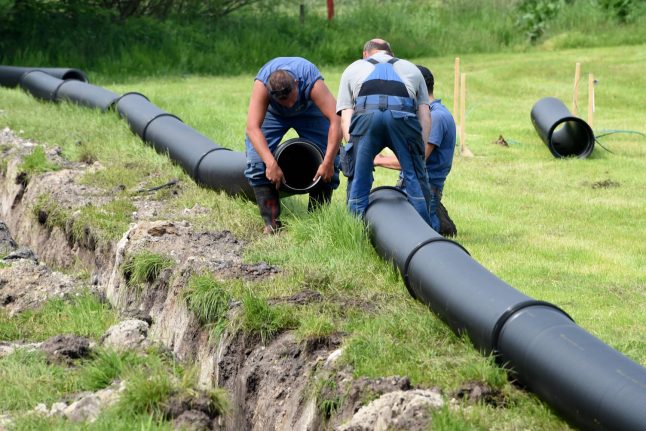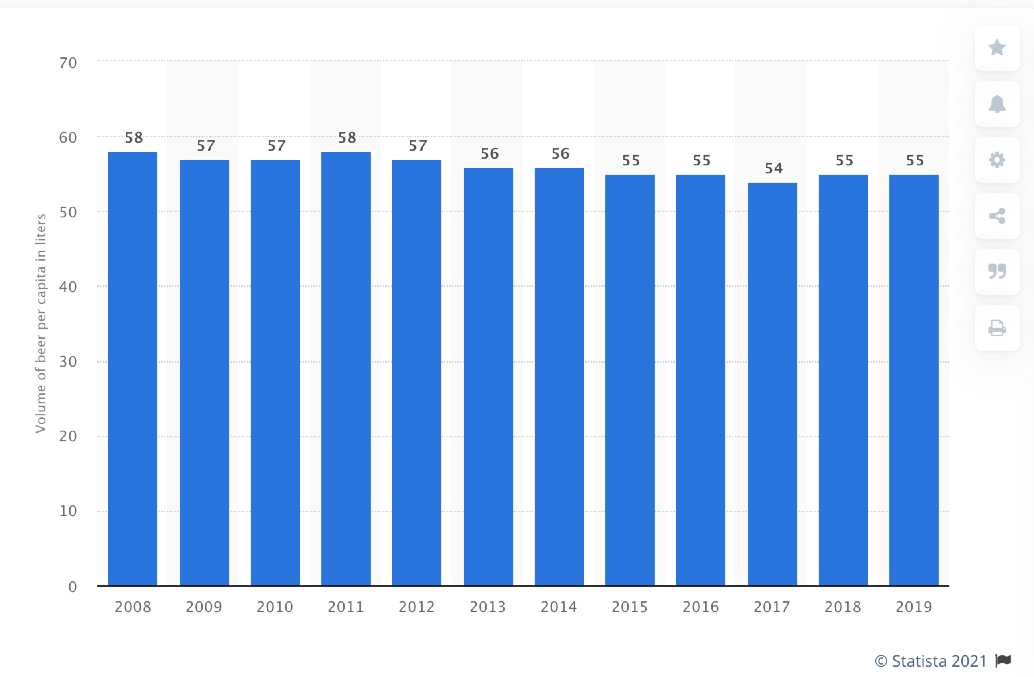The tiny town of Wacken in Schleswig-Holstein is already prepping for its annual heavy metal fest in August, which will see its current population of about 1,800 people balloon to more than 75,000.
In anticipation of all the beer to be drunk, the fest is building its first ever beer pipeline to transport the average 400,000 litres of brew consumed each year to the concert grounds. And the pipeline system will be speedy enough for bartenders to draw six beers per second.
“With this, the grounds will not to have need to have any heavy trucks distributing beer barrels,” said Wacken fest founder Holger Hübner on Tuesday.
The new pipeline is being built above all because it “is sustainable and it protects the ground” from aforementioned trucks with barrels, says spokeswoman Frederike Arns.
Each previous year, festival workers had to constantly move dozens of barrels through the grounds, bringing in full ones before and during the shows, and then removing empty ones.This caused a lot of wear and tear to the ground. The pipeline will reduce this traffic, and also eliminate the wait at the bar for a new keg to be tapped.
Along with the beer supply, the power and fiber optics will also get their own pipelines, as will drinking water and sewage – a fact which means it will be especially important that the lines don’t get crossed, the Hamburger Morgenpost notes.
“Of course we will control the hygiene of the tubes all the time,” the festival wrote in a statement.
Heavy rain during the festival can cause huge puddles to form – often to the delight of concert-goers. The improved drainage system will prevent this from happening.
“But no one should be afraid that there will be no more mud,” says Hübner.
The estimated total investment in the improvements is €1 million.
Metal fans from around the world will be able to enjoy the innovative amenities as they mosh to the music of 150 bands, including headliners Alice Cooper, Megadeath and Marilyn Manson.
According to Hamburg research group Statista, metal fans each drank on average 5.1 litres of beer in 2011. At Nürburg’s Rock am Ring rock festival, fans drank 3.1 litres each.
But while Wacken visitors may drink a lot, police and emergency workers emphasize that the open air fest is “mostly rollicking and peaceful”.




 Please whitelist us to continue reading.
Please whitelist us to continue reading.